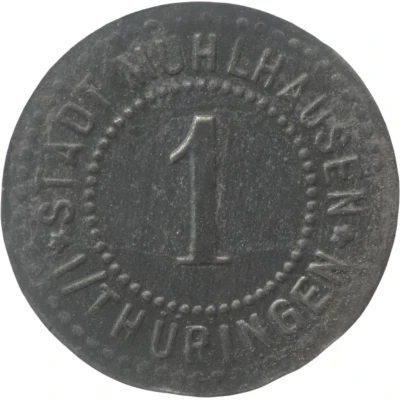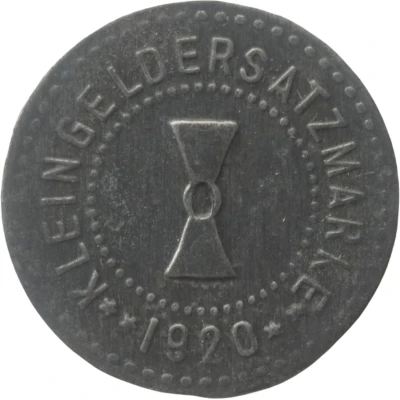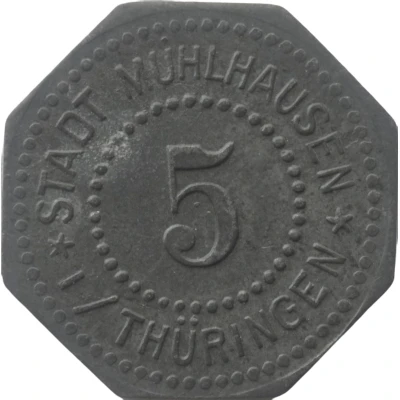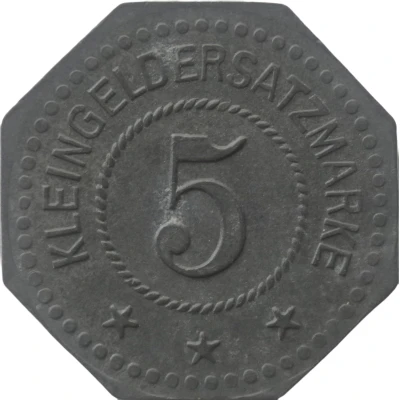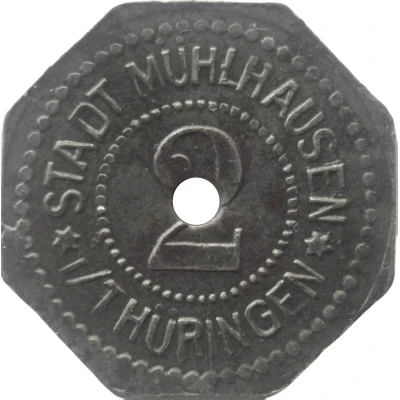
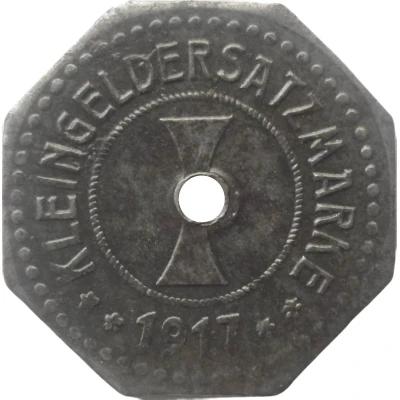

© Willem63 (CC BY-NC-SA)
2 Pfennigs - Mühlhausen in Thüringen
1917 year| Iron | 2.0 g | 18.0 mm |
| Issuer | City of Mühlhausen (Thuringia) (Prussian province of Saxony) |
|---|---|
| Emperor | William II (Wilhelm II) (1888-1918) |
| Type | Standard circulation coin |
| Year | 1917 |
| Value | 2 Pfennigs (2 Pfennige) (0.02) |
| Currency | Mark (1914-1924) |
| Composition | Iron |
| Weight | 2.0 g |
| Diameter | 18.0 mm |
| Thickness | 1.1 mm |
| Shape | Octagonal (8-sided) with a hole (Hole 2.5 mm) |
| Technique | Milled |
| Orientation | Medal alignment ↑↑ |
| Demonetized | Yes |
| Updated | 2024-10-04 |
| Numista | N#346530 |
|---|---|
| Rarity index | 94% |
Reverse
Pearl rim, legend surrounding rope circle with millrind centered
Script: Latin
Lettering:
KLEINGELDERSATZMARKE
★ ★ 1917 ★ ★
Edge
Plain
Comment
A millrind or simply rind is an iron support for the upper ("runner") stone in a pair of millstones.Interesting fact
One interesting fact about the 2 Pfennigs - Mühlhausen in Thüringen 1917 coin is that it was made of iron, which was a unusual choice of material for coins at that time, as most coins were made of copper, silver or gold. The use of iron was likely a result of the wartime economy and the need for alternative materials due to the shortage of traditional metals. This coin is a unique example of how the economic and political circumstances of a particular time and place can influence the design and production of currency.
